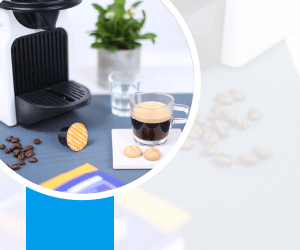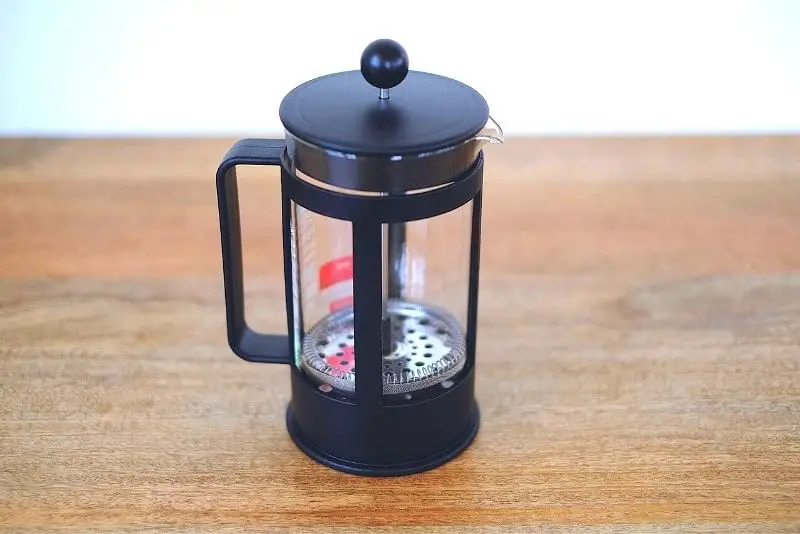Find Out More About Coffee Intolerance. Symptoms such as sweating, tremors, and nausea after drinking coffee – do you know that? Then you probably suffer from a coffee intolerance or a hypersensitivity to caffeine.
Even newcomers to coffee, who rarely drink coffee and whose bodies have not yet gotten used to the effects of caffeine, often have to contend with side effects from coffee consumption.
Symptoms Of Coffee Intolerance
There are many symptoms that your body may have an intolerance to coffee.
In addition to the tremors, sweating, and nausea already mentioned, symptoms such as diarrhea, increased pulse, frequent urination, heartburn, nervousness, insomnia or difficulty falling asleep and a “nervous stomach” can indicate a coffee intolerance or too much coffee.
With a correspondingly high dose, psychotic symptoms can even occur in people with a corresponding predisposition due to a higher dopamine level.
In a milder form with rising body heat, nervousness, or even a particularly cheerful mood, one speaks of coffee intoxication.
Difference Between Coffee Intolerance And Caffeine Intolerance

Anyone who is generally sensitive to caffeine should basically also have problems with black tea, cola drinks, and green tea. However, this is often not the case, since the caffeine dose in cola drinks is much lower and because the caffeine (the so-called ‘theine’) in black tea and green tea is released more slowly.
If you want clarity about the cause of your symptoms, a kinesiologist can help you with a simple muscle test, for example. Alternatively, some providers now offer a blood test online. With this, you prick your finger and send the sample to the certified laboratory. There, the intolerance to a variety of foods will be examined and you will be helped with nutritional tips to find alternatives to problematic ingredients.
How Does A Sudden Coffee Intolerance Come?
Why is it that you sometimes suffer from coffee intolerance, but can drink coffee on other days without having any symptoms?
The level of diamine oxidase in women with PMS is lower in the second half of the menstrual cycle than in the first half of the menstrual cycle. Caffeine also blocks the enzyme diamine oxidase (alcohol and some medications do the same). In order to avoid symptoms of coffee intolerance, PMS sufferers should limit their coffee consumption in the second half of the cycle. Easier said than done, of course, as regular coffee drinkers develop a certain dependency on caffeine.
People with histamine intolerance generally do not have enough of the important enzyme diamine oxidase (DAO), or there is an imbalance between DAO and biogenic amines. Many of those affected by this syndrome suffer from a general coffee intolerance since the caffeine blocks the DAO and the coffee itself contains biogenic amines due to the mold, which can also be found in the cleanest coffee powder, which the enzyme DAO needs to break down.
If you have problems with the thyroid gland, you may also have a coffee intolerance. That’s because coffee interferes with the conversion of T4 to T3 thyroid hormones. Patients should therefore take hormone replacement at least one to two hours before their first coffee of the day.
Who Tends To Be More Intolerant To Coffee?
Not only for women with PMS or histamine intolerance but also for people with blood group 0, coffee can be associated with symptoms. The latter should generally avoid coffee according to the blood group diet, as they already have sufficient stomach acid and additional coffee could damage the stomach.
Even people who tend to suffer from insomnia or nervousness should dose coffee carefully or avoid it.
What Helps Against Coffee Intolerance?
What can you do if you suffer from the symptoms of coffee intolerance but are passionate about drinking coffee?
- Have you ever tried espresso? Many people who react to coffee with symptoms such as heartburn or other stomach problems tolerate real espresso because it contains less acid due to the much shorter preparation time.
- The hotter the coffee is brewed, the higher its acidity. It is therefore advisable for people with a coffee intolerance to try out whether they tolerate coffee that has been prepared at a lower temperature.
- If you cannot tolerate black coffee, you should add some milk to the coffee. It softens the ingredients that particularly irritate your body. This makes the coffee easier to digest.
- If you are sensitive to caffeine, you could turn to decaf coffee. However, one disadvantage of decaffeinated coffee is that the solvent used to extract the caffeine cannot always be completely removed. Decaffeinated coffee made from raw materials that are decaffeinated from the start is the better choice in terms of additives, even if you have to get used to the different tastes of coffee made from rye, malt, or lupine.
- Steaming coffee is suitable for bile problems – this is coffee without chlorogenic acid.
- If you suffer from an upset stomach, you can try low-irritant coffee. Low-irritant coffee is obtained by using solvents and steam to reduce the outer wax content of the coffee bean. However, this treatment does not alter the caffeine content, so low-irritant coffee will not help people with caffeine intolerance.
- If possible, do not drink coffee on an empty stomach. The acid contained in coffee attacks the stomach lining; a small “pad” contributes significantly to the compatibility of the coffee.
- Molds are often found in instant coffee – these are also found in coffee beans or in the various types of tea. Those who are sensitive to these molds can switch to caffeine tablets if they don’t want to give up their caffeine dose.
- Experiment to see which type of coffee or method of preparation you are less sensitive to. Different types of coffee may contain different amounts of acid or irritants. In addition, the type and amount of additives to which many people are sensitive vary depending on the quality of the respective type of coffee.
- Drinking stomach-friendly coffee helps against coffee intolerance. If you want filter coffee instead of espresso, then Arabica beans are the best choice. Due to their geographical origin from high altitudes, they are usually milder and contain less acid. Robusta, on the other hand, has 4 to 7 percent more chlorogenic acid and is less stomach-friendly.
- If you are sure that you are reacting to certain additives in supermarket coffee, you should switch to organic coffee.
- Some people get stomach pains from drinking coffee that has been made in an espresso maker. When an espresso maker with an aluminum inner coating heats up, a tiny portion of the toxic heavy metals that sensitive people can react to is always released.
- A coffee intolerance can also be due to the precarious hygienic conditions of the coffee pad machine. On many models, some parts cannot be cleaned properly. In this case, the only thing that will help is to buy a new device or switch to instant coffee.
- The hackneyed saying “The dose makes the poison” also applies to coffee: As with many other things, it is important to find out the personal optimal amount. Coffee intolerance is not the same as a coffee allergy, it depends on the amount. Tolerance can also develop. If your best friend can drink 5 cups of coffee without getting any symptoms, this does not necessarily apply to other people.
- If you are suffering from the symptoms of your coffee intolerance and would like to know the cause, you should definitely see a doctor.
Conclusion
Coffee intolerance symptoms vary from person to person. Fortunately, there are some methods to combat the effects of coffee intolerance.
The best tips against coffee intolerance include espresso, decaffeinated and stomach-friendly coffee. Preparation plays a decisive role, which you should do as quickly and less hot as possible. Hopefully, you can enjoy coffee again afterward!
Important note: This article cannot and does not intend to replace an examination by a doctor!







